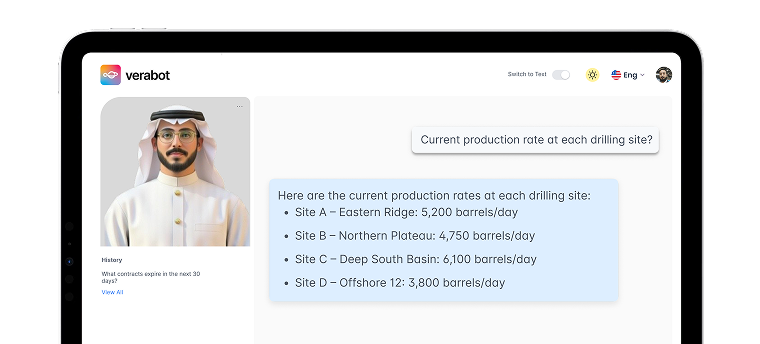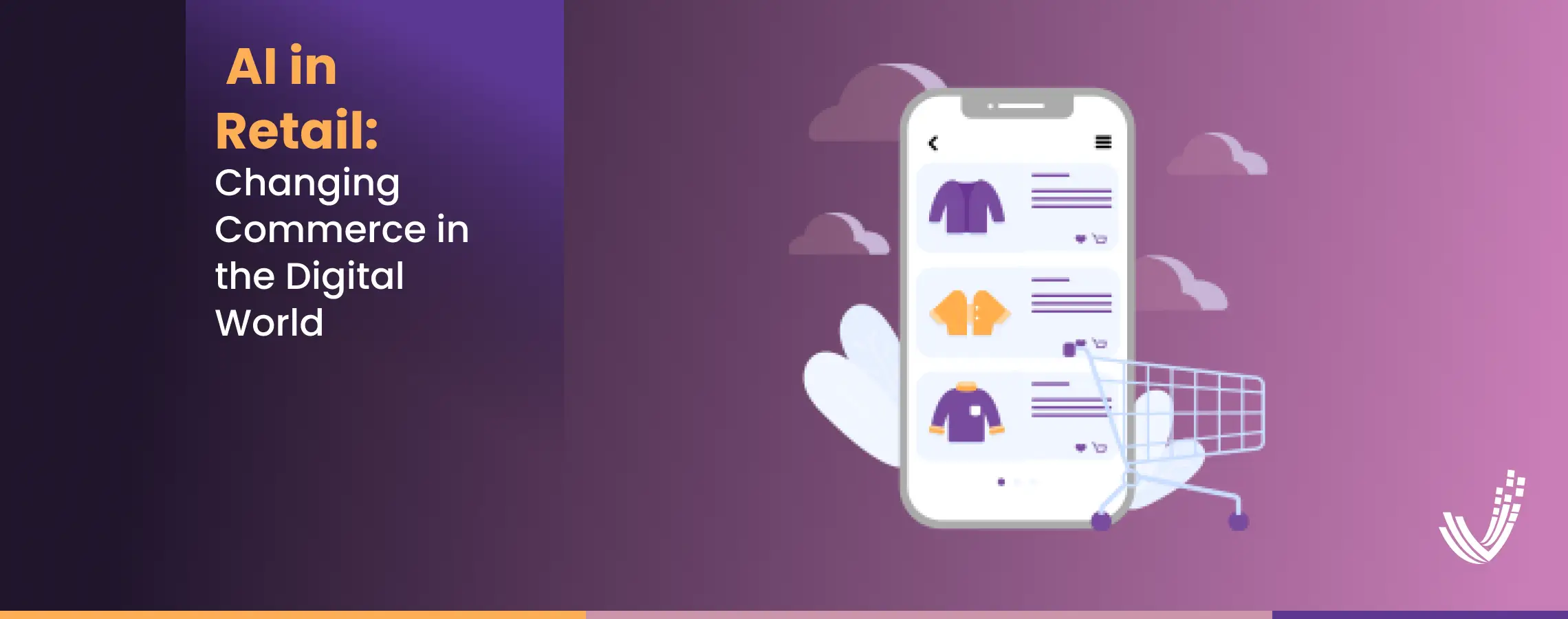The influence of AI within the retail sector is profound and far-reaching. Now, it’s not just about recommending products based on your shopping history or preferences. Rather, it’s a complete mindset shift that’s changing the very essence of how we shop and how retailers do business.
Personalized recommendations are just the tip of the iceberg here when we discuss AI in retail. Today, AI is being harnessed for tasks as diverse as managing inventory to predicting future sales trends for specific products and brands, enhancing both the customer experience and operational efficiency and delivery of lasting value.
This blog post offers an exploration of AI’s role (along with other emerging/promising technologies) within the retail landscape.
We’ll start by tracing the historical trajectory of AI in retail, providing a clear context for its current applications and potential future developments.
We’ll also examine real-world applications of AI in retail. From chatbots handling customer inquiries to smart mirrors that let you virtually try on clothes, these tangible examples provide a vivid picture of how AI is already transforming the shopping experience.
So, without wasting any more time, let’s get into it by understanding how AI works in retail.
How AI Works in Retail?
AI in retail involves using advanced technologies to analyze an ocean of data, everything from customer shopping habits to market trends and product details. This data analytics isn’t just for show. Instead, it serves several critical functions in today’s retail landscape.
AI can predict what customers might want to buy next. By studying their purchase history and behavior, AI systems can make educated guesses about what products might catch a customer’s eye.
It also helps retailers price their products just right, convenient to the pockets of consumers. By studying market trends, competitor pricing, and historical sales data, AI can suggest the most effective price points for products.
This ensures retailers get a fair profit while customers get good deals – that too with tailored market campaigns (also powered by AI).
AI can also be used to manage and govern the supply chain and inventory to overcome understocking or overstocking options. It plays a crucial role in enhancing security, detecting fraudulent activity, strengthening security measures, and protecting both retailers and customers.
So, you see, AI is not just changing retail but revolutionizing it. And as technology continues to evolve, its impact is only set to increase with time. Recent news indicates that leading retailers are already harnessing AI to great effect.
Levi Strauss & Co., for example, has announced a collaboration with custom AI solutions (source: NRF). Meanwhile, companies like Lowes and Walgreens are using AI to enhance their customer experiences, as reported by Forbes.
The History of AI in Retail
Artificial Intelligence (AI) in retail is not a recent phenomenon. Its roots can be traced back to the 1980s and 90s when computer systems began to assist in inventory management and point-of-sale transactions.
Ok, I get it – there are obvious questions regarding if AI even existed back then?
The first significant use of technology in retail was in the form of barcoding systems introduced in the 1970s and 1980s.
This technology simplified inventory tracking and made checkout processes faster and more efficient. It was a game-changer for the industry, paving the way for more advanced technologies.
In the 1990s, data mining techniques began to emerge, allowing retailers to analyze customer purchasing patterns and market trends. This was a critical step forward, as it enabled retailers to understand their customers’ needs better and tailor their offerings accordingly.
The early 2000s saw the advent of e-commerce, which brought with it new opportunities for using AI. Recommendation engines, which suggest products based on a customer’s browsing history and previous purchases, became commonplace on e-commerce platforms.
Amazon and other such retail and ecommerce giants, for example, pioneered this technique, resulting in a significant boost in sales.
Today, AI is used not just for product recommendations and pricing strategies but also for personalized marketing, customer service, supply chain management, and even in-store experiences.
According to a report by Capgemini, three out of four retailers are currently investing in AI technologies, and those investments are expected to save the retail industry $340 billion annually by 2022.
Technologies Used in AI for Retail
Artificial Intelligence (AI) in retail is a broad field, encompassing several key technologies that work together to revolutionize the shopping experience.
However, here are the top technologies that are often the backbone of any customized engine built for retail use cases.
· Machine Learning
ML is a subset of AI and is a game-changer in this space. ML algorithms analyze vast amounts of data and learning patterns and predict future trends with minimal human intervention.
For instance, ML powers recommendation systems, predicting what products customers may be interested in based on their past purchases.
In fact, according to a report by McKinsey, 35% of what consumers purchase on Amazon comes from product recommendations based on such algorithms.
· Deep Learning
Deep Learning, a more complex form of ML, uses artificial neural networks to simulate human decision-making.
Retailers use deep learning for various use cases, such as image recognition – a solution that allows customers to search for products using images.
For example, Pinterest uses deep learning for its visual search tool, which lets users find similar items or products using photos.
· Natural Language Processing
Natural Language Processing, or NLP, is another critical technology in AI for retail and is employed in multiple departments.
NLP enables computers to understand and respond to human language, signage, and multiple other inputs, making it the backbone of customer service chatbots.
According to a study by Juniper Research, chatbots are expected to bring cost savings of over $8 billion annually by 2022, up from $20 million in 2017.
Examples of AI in Retail: Top Retail Solutions
Artificial Intelligence (AI) is rapidly transforming the retail landscape, offering groundbreaking solutions that enhance customer experiences and streamline business processes.
As a retailer, it’s crucial to stay informed about these AI developments, understand their potential benefits, and employ where feasible.
Here are some top examples of AI in retail.
· Amazon
Consider Amazon, a leading player in the retail industry that has now penetrated a large ecommerce market and is known to be among the giants of the modern retail industry.
They leverage AI to offer personalized product recommendations to their customers, analyzing individual browsing history, past purchases, and products viewed by similar customers.
According to McKinsey, this strategy has proven incredibly successful, with a staggering 35% of Amazon’s sales coming from these recommendations.
· H&M and Sephora
Another impressive application of AI in retail is the use of chatbots—and leading fashion brands, including H&M and Sephora, are using the technology to lead in the retail sector.
These virtual assistants, powered by Natural Language Processing, can handle a wide range of customer service tasks, including answering queries and assisting with purchases.
This not only enhances the shopping experience but also significantly reduces the load on customer service teams.
· Walmart
AI is also making significant strides in inventory management—solving the problems of over-ordering, understocking, and more.
Walmart, for instance, uses AI-powered drones to scan warehouse inventory, a task that would traditionally take humans about a month to complete.
The drones can do it in a single day, thus improving efficiency and accuracy. Moreover, this leads to better collection and storage of data, which makes it easier to analyze later on.
So, the question is not if but how your organization will leverage AI to enhance your retail business.
Will it be through personalized recommendations, customer service chatbots, or AI-powered inventory management? Or perhaps a combination of these? The choice is yours.
Conclusion: Is AI the Future of Retail?
All the examples and use cases that we’ve discussed above, including personalized recommendations and chatbot customer service to AI-powered inventory management, tell us one thing: artificial intelligence in retail is not a passing trend. It is here to stay.
Over the past decade, the use of these transformative technologies has revolutionized the retail sector—be it a brick-and-mortar store or a digital ecommerce shop—retailers are reaping the benefits of the increased induction of intelligence.
These technologies are not only enhancing the shopping experience for customers but also streamlining operations and driving efficiency for retailers.
According to a report by Capgemini, 77% of retailers believe that AI can drive operational efficiencies and improve customer experiences.
Furthermore, as per Capgemini, businesses implementing AI have seen a 61% reduction in costs. These statistics strongly suggest that AI will continue to play a pivotal role in shaping the retail industry.
After all, embracing AI isn’t just about keeping up with the times – it’s about staying ahead in serving the consumer and being informed about their challenges, pain points, and concerts. And in the fast-paced world of retail, that’s more important than ever.
AI in retail is no longer a choice; it’s make or break.










